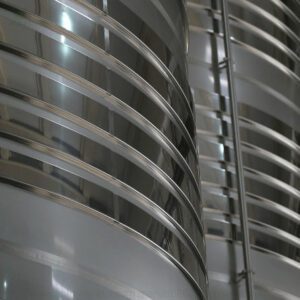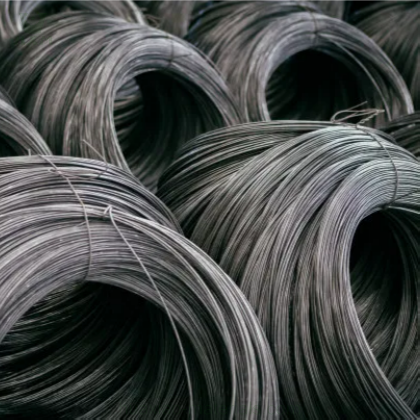
Does stainless steel conduct electricity? This intriguing question captivates the curious minds seeking to understand the electrical properties of this versatile alloy. As we delve into the realm of conductivity, we uncover the secrets hidden within the atomic structure of stainless steel. From its composition to the role of alloying elements, crystal structure, and surface conditions, join us on a captivating journey to unravel the mysteries behind stainless steel’s electrical behavior. Prepare to be enlightened as we explore the world of electrical conductivity and its implications in the realm of stainless steel.
So,Does stainless steel conduct electricity?
Yes, stainless steel is a good conductor of electricity. It has metallic bonding, which allows electrons to move freely within its structure. The presence of metallic elements, such as iron and chromium, contributes to its conductivity. However, the electrical conductivity of stainless steel can vary depending on its composition and specific alloy. In general, stainless steel is commonly used in electrical and electronic applications where its conductivity and corrosion resistance are desirable properties.
This little story is interesting and brings up the common question of whether stainless steel conduct electricity. While the problem may seem simple, in reality, it involves many complicated factors and technical details. In the following articles, we will delve deeper into these issues and answer these common but confusing questions for you.


When it comes to stainless steel, one question that arises is, “What is its electrical conductivity?” In this comprehensive exploration, we embark on a scientific journey to unravel the mysteries behind stainless steel’s electrical behavior. With a particular focus on SUS304 stainless steel, a widely used grade known for its excellent corrosion resistance and versatility, we will delve into the factors that influence the electrical conductivity of stainless steel. Additionally, we will highlight the crucial role played by stainless steel suppliers in providing high-quality materials with consistent electrical properties. Get ready to dive into the world of electrical conductivity and discover the scientific intricacies of stainless steel.
In conclusion, understanding the electrical conductivity of stainless steel, with a particular focus on SUS304 stainless steel, provides valuable insights into its applications and performance. With the collaboration of stainless steel suppliers in delivering high-quality materials, engineers and industries can harness the benefits of stainless steel’s electrical properties. As we continue to explore advancements in stainless steel conductivity, new possibilities arise, leading to innovative applications in various sectors. Stay tuned as we unravel the mysteries and potentials of stainless steel’s electrical conductivity.
In this comprehensive study, we delve into the scientific realm of electrical conductivity to unravel the truth about SUS304 stainless steel. Our focus is to provide an in-depth analysis of SUS304’s electrical conductivity and elucidate its significance in various applications. Moreover, we will highlight the role of stainless steel suppliers in delivering high-quality SUS304 stainless steel, ensuring optimal conductivity for their customers. Join us as we embark on an enlightening journey to discover the truth about SUS304 stainless steel’s electrical conductivity.

Electrical conductivity refers to the ability of a material to conduct electric current. It is a measure of how easily electrons can move through the material when subjected to an electric field.
Electrical conductivity plays a crucial role in various industries, including electronics, power transmission, telecommunications, automotive, and more. It enables the efficient flow of electricity and ensures the proper functioning of electrical and electronic devices.
SUS304 stainless steel is primarily composed of iron, chromium, and nickel, with small amounts of other elements. The composition affects its electrical conductivity, as different elements can either promote or hinder the flow of electrons.
The presence of alloying elements, such as nickel and chromium, in SUS304 stainless steel can enhance its electrical conductivity. Nickel, in particular, improves the conductivity by increasing the mobility of electrons.
The crystal structure and grain boundaries of SUS304 stainless steel also impact its electrical conductivity. A well-formed crystal structure with fewer grain boundaries promotes better electron flow, leading to higher conductivity.
Electrical conductivity can be measured using various techniques, such as the four-point probe method or eddy current testing. These methods assess the material’s resistance to the flow of electric current and calculate the conductivity accordingly.
Electrical conductivity is typically expressed in Siemens per meter (S/m) or percent IACS (International Annealed Copper Standard). S/m represents the conductance per unit length, while percent IACS compares the conductivity of the material to that of annealed copper.
SUS304 stainless steel’s electrical conductivity is compared to other stainless steel grades, such as SUS316, as well as common metals like copper and aluminum. This analysis provides insights into the relative conductivity of these materials.
The electrical conductivity values and properties of different materials are examined to determine their suitability for specific applications. Factors such as cost, corrosion resistance, and mechanical strength are considered alongside conductivity.
SUS304 stainless steel’s electrical conductivity finds utility in various industries. It is commonly used in electrical connectors, where conductivity is vital for efficient signal transmission. Heating elements, electronic components, and circuitry also benefit from SUS304’s conductivity.
SUS304 stainless steel is employed in power distribution systems, electrical enclosures, heating coils, printed circuit boards, and sensors. Its high conductivity ensures reliable performance in these demanding applications.
Stainless steel suppliers collaborate with customers to understand their conductivity requirements. They provide expert guidance in selecting the appropriate stainless steel grade, such as SUS304, which offers excellent electrical conductivity.
Suppliers ensure the delivery of high-quality SUS304 stainless steel with consistent conductivity properties. Stringent quality control measures, material traceability, and certifications ensure that customers receive reliable and optimal conductivity materials.
Ongoing research focuses on improving SUS304 stainless steel’s electrical conductivity through alloy design, grain refinement, and surface modifications. These advancements aim to enhance conductivity and expand its applications.
The future of SUS304 stainless steel’s conductivity holds promise for advancements in electrical and electronic fields. It may enable innovations in renewable energy systems, wireless communications, electric vehicles, and miniature devices. SUS304 stainless steel’s high electrical conductivity, combined with its other desirable properties like corrosion resistance and durability, opens up possibilities for more efficient and compact electronic devices.
In conclusion, understanding the electrical conductivity of SUS304 stainless steel is crucial for various industries and applications. The composition, alloying elements, crystal structure, and grain boundaries significantly influence its conductivity. Comparative analysis with other stainless steel grades and metals provides insights into its relative performance. Stainless steel suppliers play a vital role in collaborating with customers to select the right grade and ensuring material quality. Advancements in SUS304’s conductivity through research and emerging technologies pave the way for exciting future applications. By harnessing the excellent electrical conductivity of SUS304 stainless steel, industries can achieve enhanced performance, reliability, and innovation in their electrical and electronic systems.
The electrical conductivity of stainless steel is a critical property that influences its performance in various electrical and electronic applications. This article aims to delve into how the composition of stainless steel affects its electrical conductivity. By understanding this relationship, stakeholders can make informed decisions when selecting stainless steel grades for specific conductivity requirements.

1. Elements: Stainless steel primarily consists of iron (Fe) and contains varying amounts of alloying elements such as chromium (Cr), nickel (Ni), manganese (Mn), and others.
2. Cr-Ni Ratio: The ratio of chromium to nickel in stainless steel plays a crucial role in determining its electrical conductivity.
3. Effect of Alloying Elements: Different alloying elements can modify the electrical properties of stainless steel. For instance, nickel enhances conductivity, while manganese and carbon can reduce it.
1. Role of Chromium: Chromium improves the corrosion resistance of stainless steel but can slightly lower its electrical conductivity.
2. Influence of Nickel: Nickel enhances electrical conductivity due to its high electron mobility.
3. Effect of Manganese: Higher manganese content can reduce electrical conductivity as it forms non-conductive oxide layers.
4. Carbon Content: Excessive carbon content decreases electrical conductivity due to the formation of non-conductive carbides.
1. Austenitic Structure: Stainless steel grades with an austenitic crystal structure, such as SUS304, exhibit better electrical conductivity compared to other structures.
2. Grain Boundary Scattering: Grain boundaries in stainless steel can hinder electron flow and impact electrical conductivity.
1. Collaboration with Suppliers: Stainless steel suppliers play a crucial role in assisting customers in selecting the appropriate grade for specific conductivity requirements.
2. Material Quality: Ensuring high-quality stainless steel with consistent composition and reliable electrical conductivity.
3. Traceability: Traceability measures in the supply chain to maintain material integrity and reliability.
Conclusion:The composition of stainless steel significantly affects its electrical conductivity. The ratio of chromium to nickel, presence of alloying elements, crystal structure, and grain boundaries all contribute to the conductivity properties of stainless steel. Stainless steel suppliers, through collaboration with customers, play a vital role in providing high-quality materials that meet specific conductivity needs. By understanding the relationship between composition and electrical conductivity, stakeholders can make informed decisions when selecting stainless steel grades for diverse electrical and electronic applications.
Stainless steel is widely recognized for its corrosion resistance and durability. This article explores the question: Can stainless steel be used as a conductor in electrical wiring? By examining its electrical conductivity properties and considering practical applications, we can evaluate the suitability of stainless steel, particularly SUS304, as a conductor in electrical wiring systems.



1. Conductivity Overview: Stainless steel exhibits lower electrical conductivity compared to traditional conductors like copper and aluminum.
2. Factors Affecting Conductivity: The composition, crystal structure, and presence of alloying elements influence the electrical conductivity of stainless steel.
3. SUS304 Conductivity: SUS304 stainless steel, with its austenitic structure and alloying elements, possesses moderate electrical conductivity.
1. Resistance and Voltage Drop: Stainless steel’s higher resistance results in increased voltage drop over longer distances, necessitating thicker wire gauges for efficient current flow.
2. Wiring Size and Current Capacity: Stainless steel conductors may require larger wire sizes to accommodate higher current loads due to their relatively lower conductivity.
3. Application Limitations: Stainless steel conductors are typically employed in specialized applications where corrosion resistance, high-temperature tolerance, or specific mechanical properties are paramount.
1. Corrosion Resistance: Stainless steel’s exceptional resistance to corrosion makes it suitable for environments with high moisture or chemical exposure.
2. High Temperature Performance: Stainless steel conductors maintain their properties at elevated temperatures, expanding their application range.
3. Mechanical Strength: Stainless steel’s robustness and durability offer advantages in installations that require mechanical reliability.
4. Comparative Cost Analysis: Evaluating the cost-effectiveness of stainless steel conductors compared to traditional conductors.
1. Supplier Expertise: Collaboration with stainless steel suppliers ensures the selection of appropriate stainless steel grades for specific wiring applications.
2. Material Quality and Certification: Reliable suppliers provide high-quality stainless steel with traceability and adherence to industry standards.
3. Technical Support: Suppliers’ technical expertise aids in addressing conductivity-related challenges and providing customized solutions.
1. Research and Development Efforts: Ongoing studies aim to enhance the electrical conductivity of stainless steel through alloying techniques and structural modifications.
2. Emerging Applications: Exploration of new sectors and applications where stainless steel conductors offer unique advantages.
Conclusion: While stainless steel, including SUS304, possesses moderate electrical conductivity, it presents practical limitations when used as a conductor in electrical wiring. Factors such as resistance, voltage drop, wire size requirements, and specific application needs must be considered. Stainless steel suppliers play a crucial role in providing expertise, material quality, and technical support to ensure the appropriate selection and utilization of stainless steel conductors. Ongoing research and development efforts continue to expand the potential of stainless steel conductors, opening up new possibilities for their application in electrical wiring systems.
Stainless steel is renowned for its excellent corrosion resistance and durability. This article investigates specific applications that harness the electrical conductivity of stainless steel, particularly focusing on SUS304. By examining industries where electrical conductivity is crucial, we can identify how stainless steel’s unique properties make it a valuable choice in various applications.

1. Electrical Conductivity Defined: Electrical conductivity refers to a material’s ability to conduct electric current, measured in units such as Siemens per meter (S/m).
2. Factors Influencing Conductivity: Stainless steel’s composition, alloying elements, crystal structure, and grain boundaries impact its electrical conductivity.
3. SUS304 Stainless Steel Conductivity: SUS304 exhibits moderate electrical conductivity due to its austenitic structure and specific alloying elements.
1. Electrical and Electronics Industry: Stainless steel is utilized in electrical connectors, contacts, and terminals due to its conductivity and corrosion resistance.
2. Heating Elements and Appliances: Stainless steel’s electrical conductivity makes it suitable for heating elements in appliances like ovens, toasters, and electric stoves.
3. Automotive Applications: Electrical components, connectors, and sensors in vehicles leverage stainless steel’s conductivity and durability.
4. Aerospace and Defense Sector: Stainless steel is used in applications requiring electromagnetic shielding, connectors, and antennas.
1. Electrical Connectors and Contacts: Stainless steel connectors ensure reliable electrical connections in various devices and systems.
2. Heating and Resistance Elements: Stainless steel heating elements generate heat efficiently in appliances, industrial equipment, and heating systems.
3. Electronic Components: Stainless steel is employed in capacitors, resistors, and integrated circuits for its electrical properties.
4. Electrical Conductive Springs: Stainless steel springs provide electrical conductivity in applications like battery contacts and switches. 3.5. Antennas and RF Components: Stainless steel antennas exhibit excellent conductivity and durability in wireless communication systems.
1. Conductivity Enhancement: Ongoing research focuses on improving stainless steel’s electrical conductivity through alloying techniques and structural modifications.
2. Emerging Applications: Exploration of new sectors and technologies where stainless steel’s electrical conductivity can be effectively harnessed.
Conclusion: Stainless steel’s electrical conductivity, particularly in SUS304, finds diverse applications in industries such as electrical and electronics, heating systems, automotive, aerospace, and defense. The unique combination of electrical properties, corrosion resistance, and durability makes stainless steel an excellent choice for connectors, heating elements, electronic components, and more. Collaborating with stainless steel suppliers ensures the selection of appropriate grades and access to high-quality materials. Ongoing research and innovation continue to expand the potential applications of stainless steel’s electrical conductivity, paving the way for future advancements in various industries.
When sourcing stainless steel for applications requiring electrical conductivity, choosing the right supplier is crucial. This article explores the key considerations for selecting stainless steel suppliers to fulfill electrical conductivity requirements. By understanding the factors that impact conductivity and collaborating with reputable suppliers, businesses can ensure the availability of high-quality stainless steel materials that meet their specific conductivity needs.

1. Definition of Electrical Conductivity: Electrical conductivity is a measure of a material’s ability to conduct electric current.
2. Importance of Electrical Conductivity: Industries such as electronics, electrical engineering, and power transmission rely on materials with optimal conductivity for efficient performance.
1. Industry Knowledge: Look for suppliers with extensive knowledge and experience in providing stainless steel for electrical conductivity applications.
2. Understanding of Conductivity Requirements: Suppliers who comprehend the specific conductivity requirements of different industries can offer valuable guidance.
1. Traceability and Certification: Reputable suppliers ensure traceability and provide certifications that validate the quality and composition of their stainless steel products.
2. Consistency in Conductivity: Consistent electrical properties within specified tolerances are essential to meet conductivity requirements.
1. Availability of Conductive Grades: Choose suppliers who offer a wide range of stainless steel grades known for their conductivity, such as SUS304.
2. Customization Options: Suppliers capable of providing customized stainless steel solutions tailored to specific conductivity needs offer added value.
1. Supplier Relationships: Strong partnerships with reliable stainless steel mills and manufacturers ensure a consistent supply of high-quality materials.
2. Inventory Management: Suppliers with efficient inventory management systems can provide timely delivery to meet project deadlines.
1. Application-specific Recommendations: Suppliers that offer technical support can assist in selecting the most suitable stainless steel grade for the desired electrical conductivity requirements.
2. Collaboration in Problem-solving: Choose suppliers who are willing to collaborate and address any challenges related to electrical conductivity.
1. Processing Capabilities: Suppliers equipped with advanced processing facilities can provide customized shapes, sizes, and finishes to meet specific application requirements.
2. Testing and Certification: Access to in-house testing facilities or partnerships with reputable laboratories ensures compliance with conductivity specifications.
1. Transparent Pricing: Seek suppliers who offer competitive pricing structures and transparent cost breakdowns.
2. Cost-efficiency: Consider the overall value proposition, including the quality, consistency, and support provided by the supplier, to assess cost-effectiveness.
Conclusion: Selecting the right stainless steel supplier is crucial when seeking materials with optimal electrical conductivity. By considering factors such as supplier expertise, material quality, range of grades, supply chain reliability, technical support, value-added services, and cost-effectiveness, businesses can make informed decisions. Collaborating with reputable suppliers ensures access to high-quality stainless steel that meets specific electrical conductivity requirements, enabling successful implementation of various applications in industries that depend on efficient electrical conduction.
In conclusion, stainless steel does indeed conduct electricity. It exhibits good electrical conductivity, especially certain stainless steel alloys with high conductivity elements, such as SUS304 stainless steel. The electrical conductivity of this material can rival that of many common metals, making it an ideal choice for a wide range of electrical and electronic applications. Selecting the right stainless steel supplier is crucial for meeting conductivity requirements. Key considerations when choosing suppliers include their expertise, material quality and consistency, supply chain reliability, technical support, value-added services, and cost-effectiveness. By partnering with reliable suppliers, businesses can obtain high-quality stainless steel materials, meet specific conductivity needs, and successfully apply them in various industries that rely on efficient electrical conductivity.
Copyright@2023 Huaxiao Metal Corporation Limited . All rights are reserved
WhatsApp us
Feel free to contact us!
If you need our products, please leave us a message with the specific specifications and quantity through the window on the right!
Reply within 24 hours